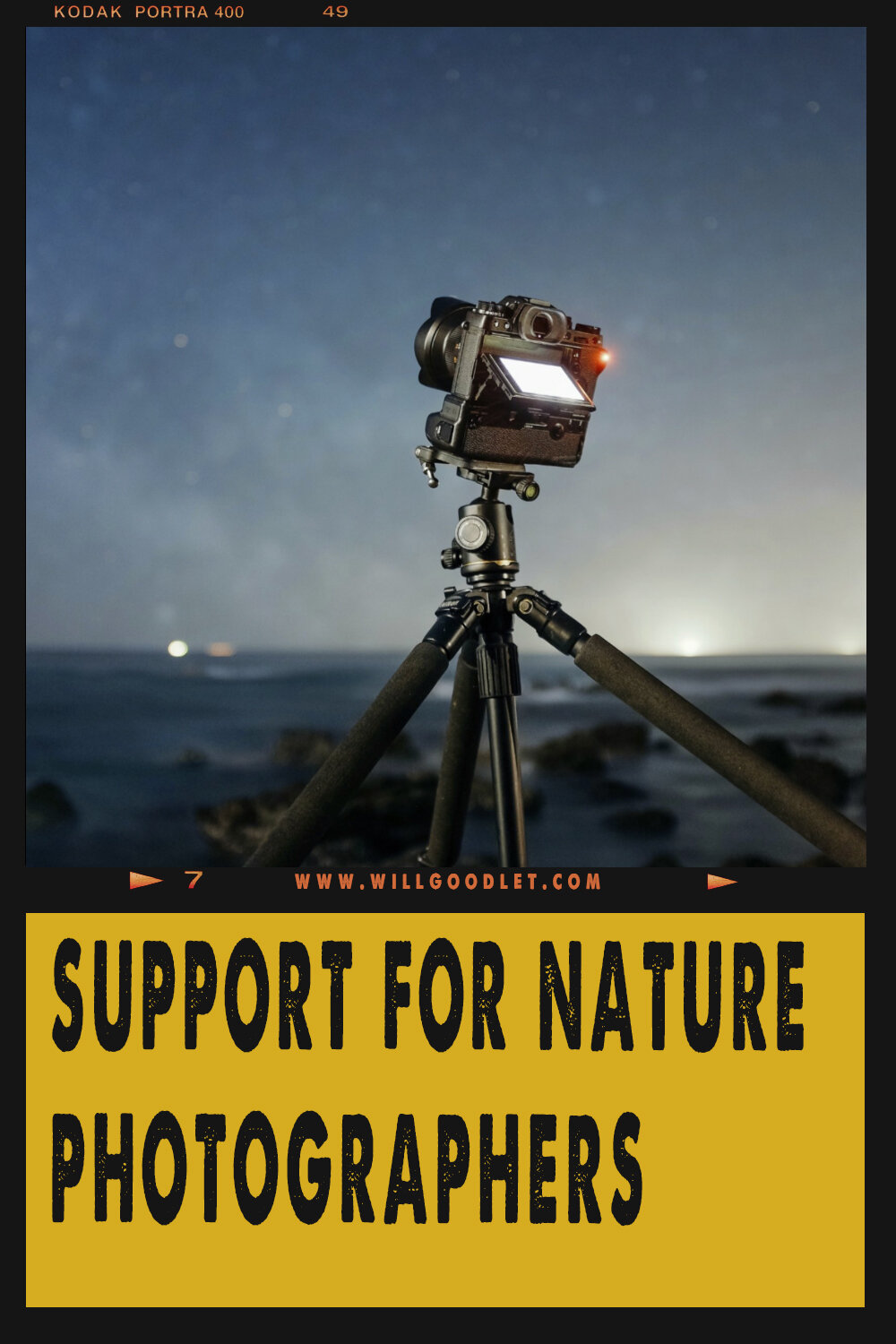Tripods & Support for Nature Photographers
Why is it that we photographers will fork out huge amounts of cash for cameras and lenses but always balk at tripods? There seems to be a pattern where will buy any old flimsy shit because we just need it to hold our cameras up.
Looking at two tripods side buy side with one costing two or three times the price of the other, nine times out of ten we choose the cheaper one. I am certainly guilty of doing this and in the past I have had an array of dubious contraptions. But I’ve learned something, buying cheap can often cost much more in the long run.
I hope, perhaps, that I have now learned this lesson because a good tripod will last us for life and could be one of the best photographic accessories we ever buy.
Why are they such amazing, if unglamorous, tools? Well, it’s not necessarily the obvious ability to hold a camera in place that turns me on. It’s a trait that is more sexy than that. Tripods allow us repeatability.
Repeatability opens a whole lot of photographic doors and some of these doors can’t be opened by even the most expensive cameras.
Have you ever been out taking pictures and been stymied by excessive dynamic range in the shot? No matter what you do, either the shadows or the highlights are clipped? One answer is to go out and buy a new camera or use filters but there’s another too. Stick your existing camera on a tripod and bracket your exposures. This method will save you a fortune!
What about photographing a river or a waterfall - you’ve got an expensive ND filter on your lens and you brace yourself to take the shot, no matter what you do you can’t keep it still enough without a tripod. Better, you can chuck out the ND, take repeated shots and blend them instead.
Need to photograph a still life or food shot indoors? One way to do it is to bump the ISO and to use a fast lens on your camera - although the quality might take a dive. But if you use your tripod, you can use base ISO and a cheap lens and achieve better results - just extend the exposure - something we can only achieve with a tripod.
Want sharp focus front to back in your landscapes? Maybe that really expensive wide angle lens with sharp corners will do the trick? Or maybe your tripod will step in and allow you to do the same thing with the lens you have now. Focus stack the shots instead.
Long story short, the humble tripod is an amazing tool and it will make even the cheapest camera much much better. So much better, that that long awaited camera upgrade might not be needed at all.
Suddenly, a good tripod doesn’t sound so expensive anymore!
Tripod Legs
Here’s a travel tripod being used all wrong!! The centre column is extended making for a very unstable platform. Extending the legs would be much better here.
Better tripods generally come in two major pieces: The legs and the head. The tripod legs hold the camera up and the head screws into them to allow the camera to move and be locked in different positions.
Because the heads and the legs are separate items, we can get much more use from the tripod by using different types of head.
Fluid video tripod head designed to give smooth panning and tilt movements in video.
Legs are pretty self explanatory however, there are a few points to note. Legs have sections that extend telescopically to set the height of the tripod. More compact tripods, perhaps those made for travel or backpacking, will have more sections (4 or more) to allow them to pack into a small size.
Fewer but longer leg sections are always more stable just because they have fewer joints and the lowest leg can be thicker. The downside is that they are larger when packed.
Tripods legs also have different designs where the head attaches. There are self levelling tripods (mainly for panoramic or video work), centre column tripods, and tripods without columns. There are all sorts of ingenious designs that can hang the cameras above the ground or over still lifes.
A ‘crazy’ large format photographer using old school wooden legs.
Centre columns add another joint and so offer less stability but their versatility is also extremely useful. For low to the ground shots, one either has to forego the column (some are removable) or use a tripod without the column. There is a type that allows you to reverse the column and hang the camera above the ground but with these we have to be careful not to get the legs in the shot.
For landscapers, its useful to have a hook under the tripod centre column where we can hang our camera bag or a bag of stones to keep the tripod steady in high winds or waves. For this reason, I’d always advise getting a tripod that can handle more weight than just your camera and lens.
Star trails would be impossible without a solid support for the camera and lens.
Tripod materials
Tripods are made from wood (best vibration dampening), aluminium (cheapest cost to weight ratio), steel (cheapest heavy duty) to carbon fibre (lightest, strongest but most expensive). Carbon fibre is the current go to material, but be careful because although they are very strong in terms of tensile or bending loads they are spectacularly weak when subjected to drops or direct hits.










